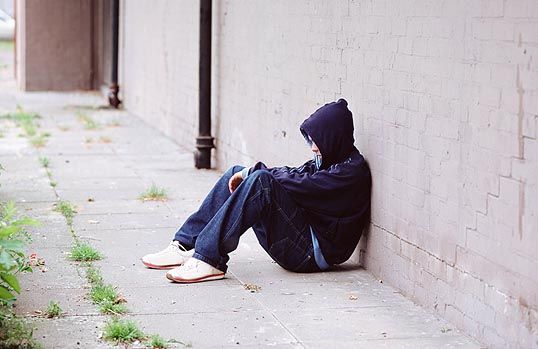 WASHINGTON – The number of homeless children enrolled in U.S. public schools rose 10 percent in the 2011-12 school year to a record high of more than 1.1 million, U.S. Department of Education statistics show.
WASHINGTON – The number of homeless children enrolled in U.S. public schools rose 10 percent in the 2011-12 school year to a record high of more than 1.1 million, U.S. Department of Education statistics show.
The statistics, for the latest school year available, continue an alarming and persistent trend in the growing number of homeless schoolchildren, up 72 percent since 2006-07, the school year preceding the U.S. recession.
“It’s unconscionable to think that in this nation of such resources and such wealth we have children who are literally struggling to survive, and public schools have become the safety net,” Barbara Duffield, policy director of the National Association for the Education of Homeless Children and Youth, told Youth Today.
“The recovery has bypassed the poorest families and youth in our country. They’re not seeing conditions improve.
“A lot of people think, well, the recession’s over and things are getting better, but that’s not actually what we’re seeing in public schools,” said Duffield, whose association focuses on meeting the educational needs of homeless children and providing advocacy for the children and their families.
First Focus, a bipartisan organization that advocates on behalf of children and families, noted the statistics underestimate the number of homeless children because they do not include homeless infants and toddlers, young children not enrolled in public preschool programs and homeless children not identified by school officials.
Overall, 43 states reported year-to-year increases in the number of homeless students, with 10 states reporting increases of 20 percent or more.
Some of the children included in the Education Department statistics are not recognized as homeless by the US. Department of Housing and Urban Development, meaning they’re eligible for assistance for the homeless from schools but not for aid from HUD.
Duffield said homeless schoolchildren often move frequently and, as a result, change schools and thus lose the consistency of having the same teachers, friends and coursework, making it difficult for them to keep up.
Federal law stipulates that students be allowed to stay in the same school when forced to move but parents often don’t know their rights and schools sometimes struggle with transportation for the children, Duffield said.
“So one of the biggest challenges is … staying in that same school so you can have the same teacher and the same friends and really have something be constant when everything else is turned upside down,” she said.
Some students may eat their only meal of the day at school, while others struggle to sleep in a noisy environment, making it difficult for them to focus on schoolwork, Duffield said.
Bruce Lesley, the president of First Focus, told Youth Today that in recessions poverty typically increases first for children and declines last for them. That’s partly because their parents – young adults – are often among the first to lose their jobs, Lesley said.
Cara Baldari, senior policy director and legal counsel at First Focus, pointed out that many schools have little or no support services for homeless students, including means to identify them as homeless and keeping them in the same school if that would help them maintain stability.
Under federal law, every school district is required to provide a homeless student liaison to provide assistance and referrals, but Duffield said the liaison often plays several different roles and is sometimes even the superintendent, making it hard to focus on the needs of homeless students.
Baldari also said the foreclosure crisis has hit children especially hard, affecting 8 million children and leaving many homeless.
She said it’s critical to preserve safety net programs and services such as the Supplemental Nutrition Assistance Program, the earned- and child-income tax credits and affordable housing.
Baldari said homeless families often remain unseen by most of us because they’re not on the streets or in shelters as much as other homeless people.
“They’re often very invisible in our communities and so they might be living in a motel or they might be what we like to refer to as doubling up, which means they are living with another family, relative or friend and have no legal claim to that property and [are] at risk of being kicked out or can’t stay very long,” she said.
“Even if they are able to stay, a child might be sleeping on the floor, the couch or have no place to study. It’s a very unstable environment.”
Ruth White, the executive director of the National Center for Housing and Child Welfare, called the new Education Department statistics “devastating, but sadly, entirely predictable.”
In a statement, White said the stats on homeless schoolchildren provide “more evidence that the federal government has abandoned its commitment to fill yawning gaps in affordable housing options for low-income families. … This alarming trend could be easily reversed by prudent investments in federal housing policy that help families make ends meet.”



























